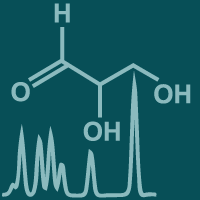Topic Menu
► Topic MenuTopic Editors


Advances in Bioinformatics and Computational Biology of Human Disease
Topic Information
Dear Colleagues,
In today's big-data era, the exponential growth of information due to the latest advancements in high-throughput technologies is indisputable. Therefore, efficient algorithms and tools for the extraction, analysis, exploration, and representation of biological information are necessary. In this regard, we invite investigators to contribute original bioinformatics research and review articles describing novel methods, algorithms, software applications, web services, and workflows that are able to cope with larger datasets, complexity, and new datasets or databases which integrate information from different sources. Submissions across the entire spectrum of life and biomedical sciences are welcomed.
Dr. Ioannis Michalopoulos
Dr. Georgios A. Pavlopoulos
Topic Editors
Keywords
- genomics
- sequence analysis
- gene expression
- structural bioinformatics
- gene regulation
- proteomics
- metabolomics
- biological networks
- data visualization
- data integration
- AI/ML
- personalized medicine
- meta-analysis
- cancer research
- disease research
Participating Journals
| Journal Name | Impact Factor | CiteScore | Launched Year | First Decision (median) | APC |
|---|---|---|---|---|---|

Biology
|
4.2 | 4.0 | 2012 | 18.7 Days | CHF 2700 |

BioTech
|
- | 4.4 | 2012 | 19.6 Days | CHF 1600 |

Cells
|
6.0 | 9.0 | 2012 | 16.6 Days | CHF 2700 |

Genes
|
3.5 | 5.1 | 2010 | 16.5 Days | CHF 2600 |

Metabolites
|
4.1 | 5.3 | 2011 | 13.2 Days | CHF 2700 |

MDPI Topics is cooperating with Preprints.org and has built a direct connection between MDPI journals and Preprints.org. Authors are encouraged to enjoy the benefits by posting a preprint at Preprints.org prior to publication:
- Immediately share your ideas ahead of publication and establish your research priority;
- Protect your idea from being stolen with this time-stamped preprint article;
- Enhance the exposure and impact of your research;
- Receive feedback from your peers in advance;
- Have it indexed in Web of Science (Preprint Citation Index), Google Scholar, Crossref, SHARE, PrePubMed, Scilit and Europe PMC.

